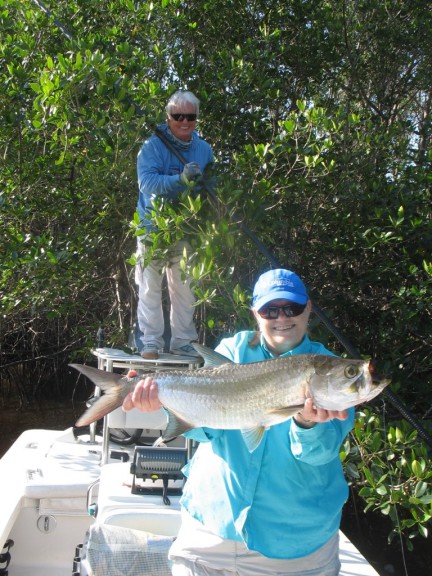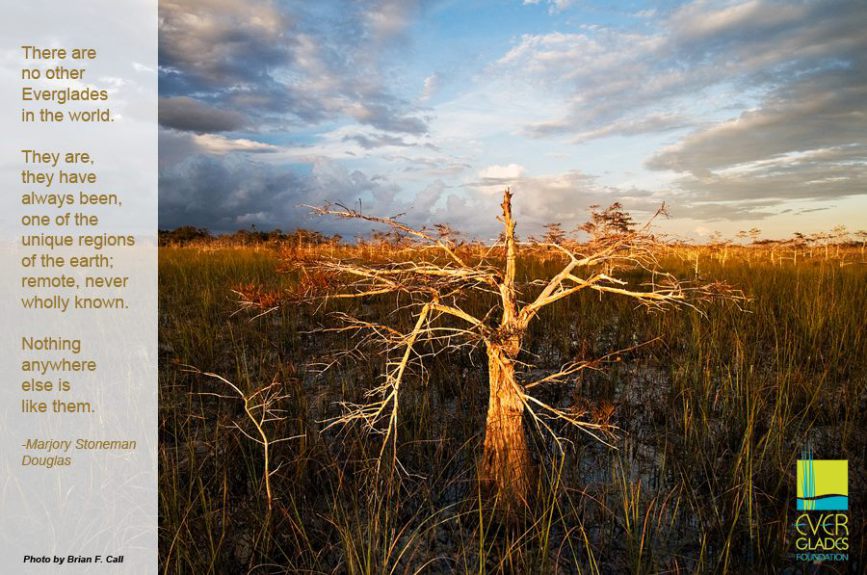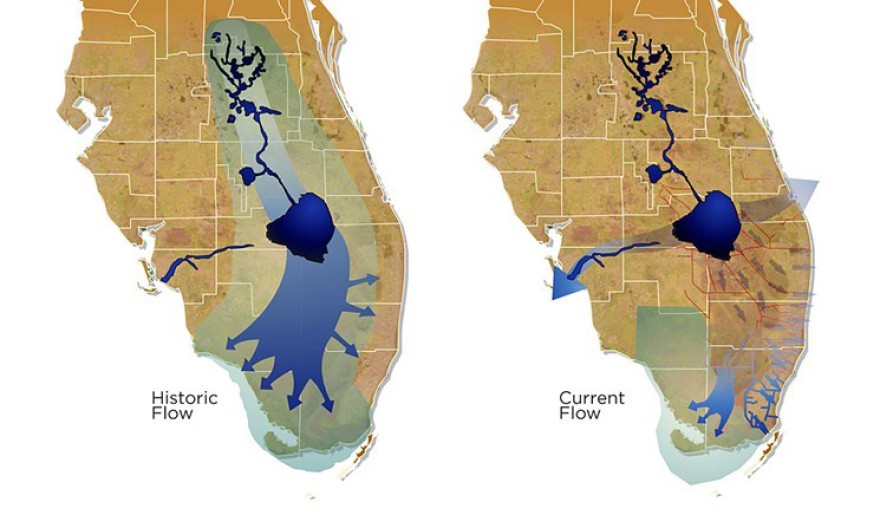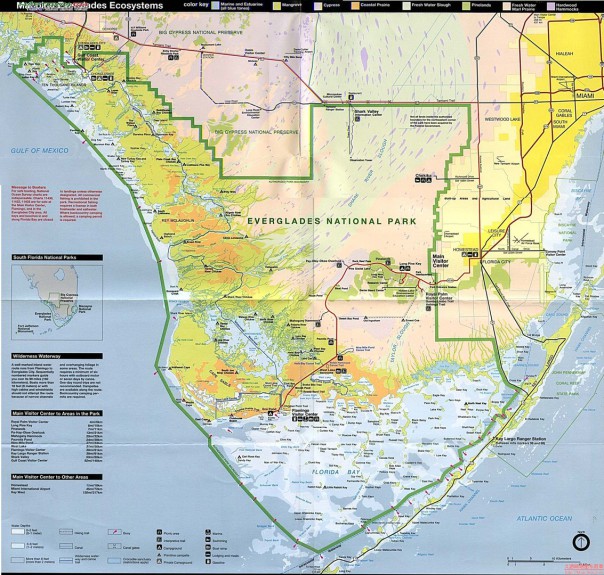Everglades Fly Fishing Is Superb
The Everglades National Park
Established: December 6, 1947
Size: 1,542,526 acres
Established in 1947 to preserve the biological diversity and resources of the Everglades ecosystems, the Everglades National Park protects 1.5 million acres of Florida’s southern tip. Most of the prehistoric landscape—a mix of freshwater and coastal prairie, mangroves, marshland, pine, cypress woods, and the waters and islands of Florida Bay—is a federally designated wilderness (the largest subtropical wilderness in the United States).
Famously called a “river of grass” by Florida writer and environmental activist Marjory Stoneman Douglas, the Everglades ecosystem once flowed freely from Lake Okeechobee in south-central Florida to the Gulf of Mexico and Florida Bay. Although the park is a federally protected area at the southernmost portion of the Everglades, upstream development and agribusiness continue to diminish watery habitats (home to abundant fish and wildlife, including tropical wading birds and the Florida manatee).
I have the privilege of being an Everglades Fly Fishing Guide in this National Park treasure. This privilege entails having the responsibility to help restore and preserve the Everglades. I take this responsibility very seriously and encourage all of my clients to do the same.
Everglades Fly Fishing Guide In The Park
Everglades National Park Quick Facts
One in every three Floridians (8 million people) relies on the Everglades for their water supply.
The Everglades comprise the largest subtropical wetland ecosystem in North America.
The Everglades is a World Heritage Site and an International Biosphere Reserve.
While it is often described as a swamp or forested wetland, the Everglades is a slow-moving river.
Once spread over millions of acres, the Everglades ecosystem reaches from the Kissimmee River to Lake Okeechobee, where waters slowly move south toward Florida Bay.
Native Americans living in and around the river called it Pahayokee (pah-HIGH-oh-geh), the "grassy waters."
Birds were so plentiful in the Everglades that it was said they "darkened the sky" when they flew.
America's Everglades is home to 73 threatened or endangered species.
Just months after Florida became a state in 1845, the legislature took the first steps that would lead to draining the Everglades.
Periphyton, the mossy golden-brown substance found floating in bodies of water throughout the Everglades, is the dominant life form in the River of Grass ecosystem.
The Everglades is the only place where the American Alligator and the American Crocodile co-exist in the wild.
Mosquitoes play a vitally important link in the Everglades food chain. The larvae of grown mosquitoes provide food for various native fish that are critical to the diet of wading birds.
The ubiquitous grassy plants, known as sawgrass (a sedge), have serrated, razor-edged blades of grass that are so sharp that they have been known to cut through clothing.
This is a place like no other.
To help restore water flow and preserve one of eastern North America's last remaining grassland and longleaf pine savanna landscapes, the U.S. Fish and Wildlife Service established the Everglades Headwaters National Wildlife Refuge and Conservation Area in 2011.
Our Conservation Legacy
Quality Everglades Fly Fishing and Conservation
In 2000, Congress passed the 30-year Comprehensive Everglades Restoration Plan (CERP) to restore, protect and preserve 18,000 square miles of land over 16 Florida counties. The Everglades Foundation worked with nearly two-dozen other private and public organizations to identify the essential goals of fulfilling CERP’s promise. Among these are improving and protecting water quality, providing water storage needs, and restoring the historic water flow from Lake Okeechobee to the Everglades.
“We need to clean the water, take out the fertilizer and build marshes designed to clean the water as it flows south,” says Dr. Tom Van Lent, a senior scientist researching the Everglades.
Dr. Van Lent and other scientists are involved in ongoing projects to clean the water and improve water storage and flow. “Everglades restoration is like trying to assemble the world’s largest, most complex, eco-oriented jigsaw puzzle,” says Dr. Van Lent, “just when you think you have all the pieces, you realize you need help identifying other pieces of the puzzle, so you can complete the picture without missing something critical.”
Everglades Fly Fishing Guide & Historic Everglades
At the turn of the 20th century, there were a strong group of men and women who, along with the Native Americans, lived and explored all that the Everglades had to offer, including some great fishing. These photos were taken around 1905 show anglers, wildlife, and tarpon having a ball.













































